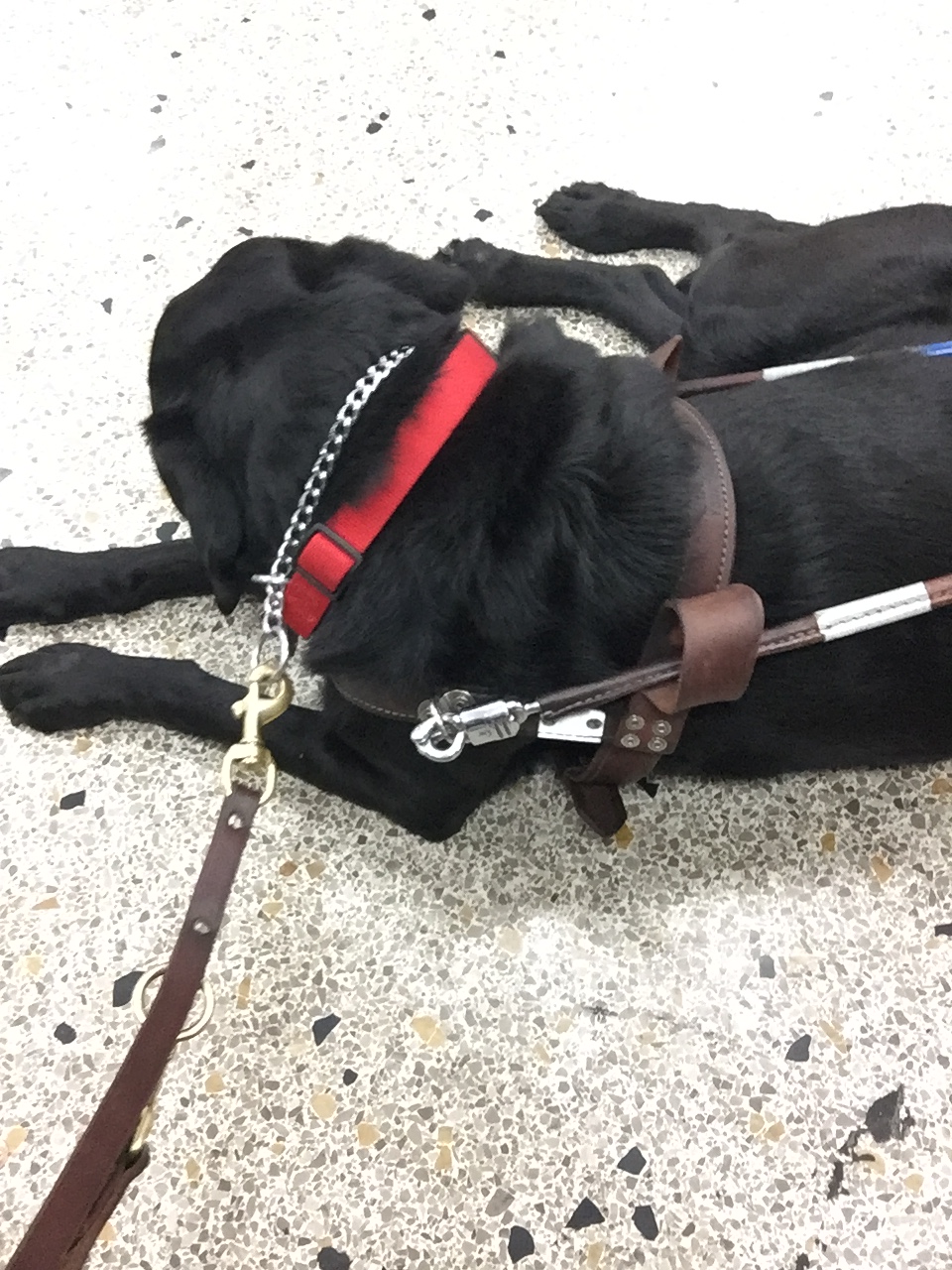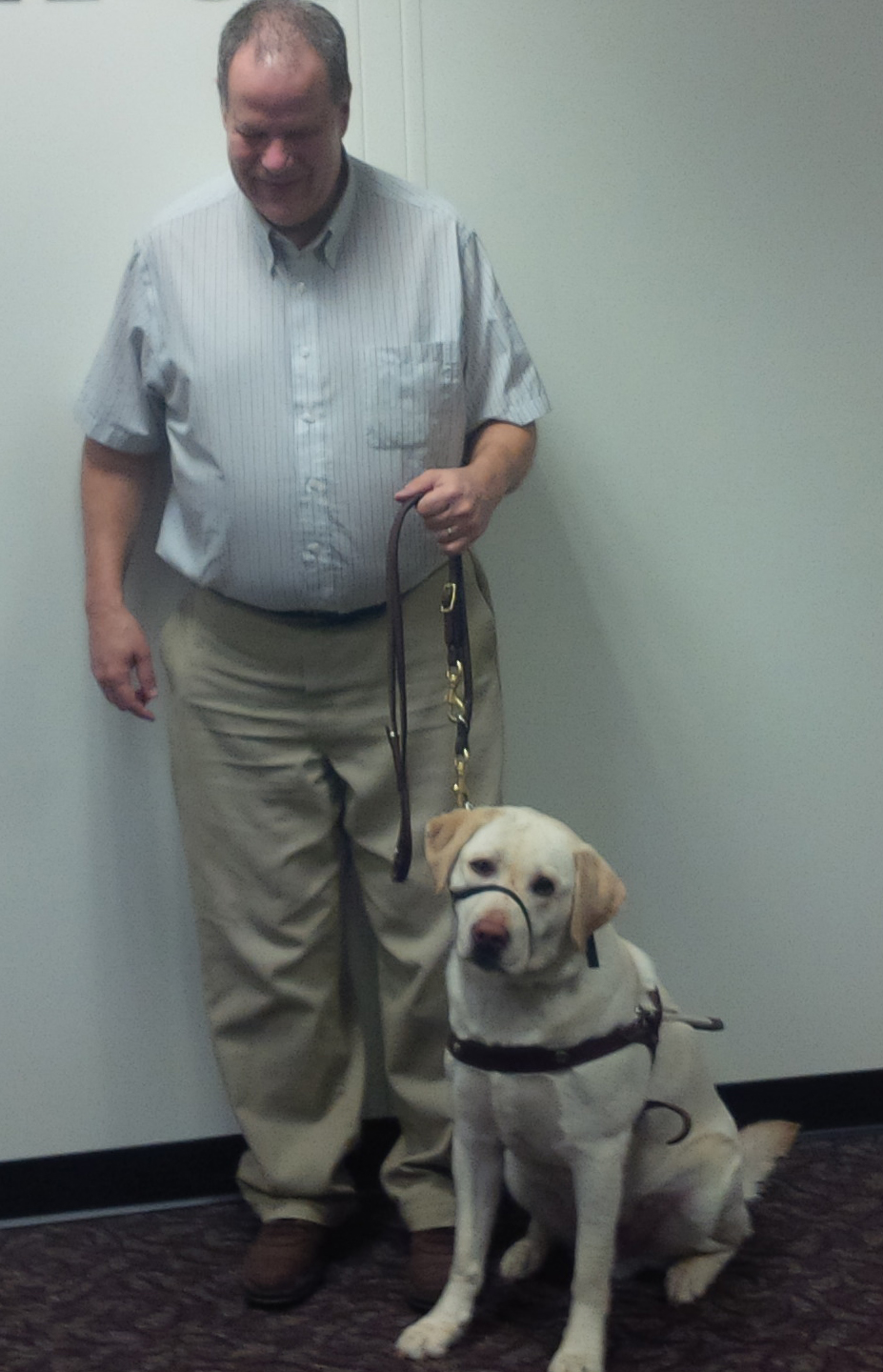COLUMBUS, Ohio –
As part of National Service Dog Month, DLA Land and Maritime recognizes service dogs who provide assistance, companionship, independence, peace of mind and protection to their owners and associates.
There is a saying - “a dog is a man’s best friend;” however for many individuals, their dog is much more – acting as an invaluable partner in their day-to-day life.
Every month, DLA Land and Maritime recognizes outstanding employees and provides recognition through various programs; although there is another set of hard workers within the workforce – service dogs that deserve their own appreciation.
The most common service dogs are:
- Autism support dogs
- Diabetic alert dogs
- Guide dogs
- Hearing alert dogs
- Mobility assistance dogs
- PTSD dogs
- Seizure alert and response dogs
The annual observance recognizes the importance of service dogs that empower individuals with debilitating medical conditions.
Peer-reviewed studies have shown that a person paired with a service dog is 90 percent more independent, has 80 percent improved self-esteem and is 80 percent more content and assertive.
Service dogs are custom-trained to assist their companion while enhancing their owner’s independence by helping with a variety of everyday tasks, including working at DLA Land and Maritime.
Meet DLA Land and Maritime Service Dogs and Handlers
Rhythm & Rachel
 Rhythm is a nine year old Labrador retriever that has been with her handler and DLA Land and Maritime associate, Rachel Fetsko, for the past seven years.
Rhythm is a nine year old Labrador retriever that has been with her handler and DLA Land and Maritime associate, Rachel Fetsko, for the past seven years.
Rhythm was bred to be a guide dog by a specialized training school. She was tested at certain stages to determine if she would qualify. After a year and a half, she was put into the actual guide dog training program.
Rhythm was just over two years old when Rachel met her.
They were paired together by the guide dog school. The trainers at the school take walking speed and lifestyle into account when they match the dogs and students together for placement.
A guide dog’s job, like Rhythm, is to guide a person along a path and avoid obstacles. Obstacles can be moving or stationary.
A common misconception is that the dog knows where it’s going and takes the person somewhere on its own. Another is that the dogs can read street signs. The handler actually gives the dog instructions on where to go and the dog watches for hazards along the way. The dog is trained to stop at curbs and steps as well as to slow down when the pair encounters an incline.
Rachel explained a typical day for her and Rhythm is routine. She feeds the dog and takes her out on a schedule. They head to the office around 8 a.m. At her cubical, Rhythm rests in her bed and can relax. She goes out at lunch time. At the end of the day, they get a ride home. Rhythm gets a walk every evening after her dinner, weather permitting. At home she is a typical dog. Out of harness, she can behave like a pet.
When Rhythm is off-duty, playtime is important for stress relief. Her favorite activities are taking walks and swimming.
Odie & Brian
 Odie is a five year old Labrador retriever and has accompanied his handler and DLA Land and Maritime associate, Brian Zolo, every day to the office for the past four years.
Odie is a five year old Labrador retriever and has accompanied his handler and DLA Land and Maritime associate, Brian Zolo, every day to the office for the past four years.
Odie was trained at a guide dog school and met Brian on September 13, 2013.
Brian explained that the biggest obstacle for obtaining a service dog is the required time away from the office. The first time a handler is paired with a guide dog, they need about a month to be able to attend the school, learn to work with each other and bond. This can be very difficult for some.
Odie isn’t Brian’s first guide dog. In fact, he is his sixth partner. As a result, Odie and Brian only needed to spend a couple weeks at the school together and the remaining training and bonding took place over the next few months at home.
Odie lives at home with Brian, his wife Kathy and her guide dog Ginger.
After work Odie enjoys playing in the yard off harness with Ginger. On really nice days, the dogs sometimes need a treat as a little incentive to come back inside.
“It’s important to remember that while service dogs are trained, they are like kids. Sometimes they are curious and want to explore. People often expect them to be perfect, but no person or animal is despite the training. When a mistake happens, it’s used as a learning moment,” said Brian.
Brian also wanted to let people know when a mistake happens, it’s important to tell the handler and let them handle it rather than trying to correct it yourself.
Often people believe that the dog knows where it’s going without prompting from the owner. This is not the case. Just like humans, animals can learn routines; although they still need guidance as to where to go.
“They [the service dogs] get excited just like we [people] do and want to see their friends rather than work sometimes,” said Brian. When Odie and Brian arrive at the gym and his wife and Ginger are already there, Odie gets excited, wags his tail and will bring Brian right to his wife and dog; despite if that was where he was originally going.
Brian said it’s the little things and having the relationship with his service dog that matters. There’s a time to work and a time to play, but sometimes there’s room for a little leeway.
Normally, strangers should not pet a working dog in harness; however, some owners make exceptions to this.
Brian told a story going to an elementary school with Kathy and showing the children braille writing. Afterwards, the kids had a chance to meet Odie and Ginger. The handlers allowed this because dogs can sense when people get upset or are nervous and they wanted the experience to be good for everyone.
8 things to know about service dogs
- Do not distract the dog. When a service dog is in harness, they’re not to be petted. Always ask permission first.
- Service dogs can be any color, size or breed. While there are certain breeds that are seen more commonly as service dogs, dogs of all breeds can become service dogs. Size and strength is a requirement for brace and mobility support, but not necessarily to be able to detect seizures. It’s all about finding the perfect fit for the dog and the owner.
- There are a variety of service dog professions. Dogs are trained in various fields from allergy and autism to visual assistance and everything in between.
- Service dogs perform specific tasks and work for their handler. A sample of tasks that service dogs are trained to perform are
• retrieving dropped items
• opening and closing doors
• alerting a diabetic person to dangerous shifts in blood sugar
• helping to end a seizure via tactical stimulation
• bracing an unsteady handler
• and much more.
- There’s not a requirement to have paperwork for a service dog. While some programs offer paperwork – documentation, registration, and certification – it’s optional and not required by law. *A Reasonable Accommodation is required for DLA associates.
- The handler has a right to access places of public accommodation with their service dog.
- There are only two questions that service dog handlers can be asked by a business or place of public accommodation if it’s not apparent that the animal is a service dog.
• Is the animal required because of a disability? The more common version of this question: Is that a service dog?
• What work or task has the dog been trained to preform?
- Service dogs don’t typically work their entire lives. When they retire, they have options available:
• The dog remains with the owner as a pet.
• The service animal is returned to the program/school.
• The pet is rehomed with their puppy raiser, friend, family member or another loving family.